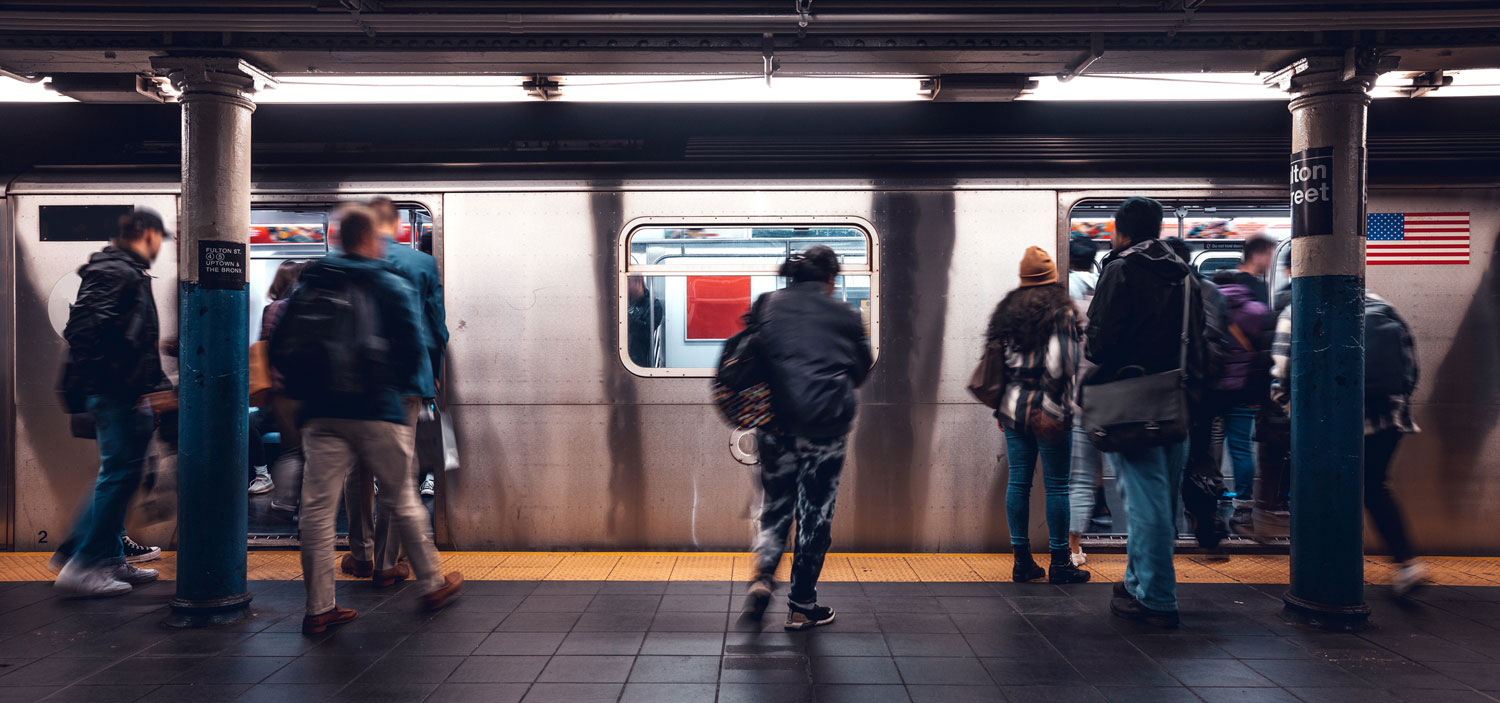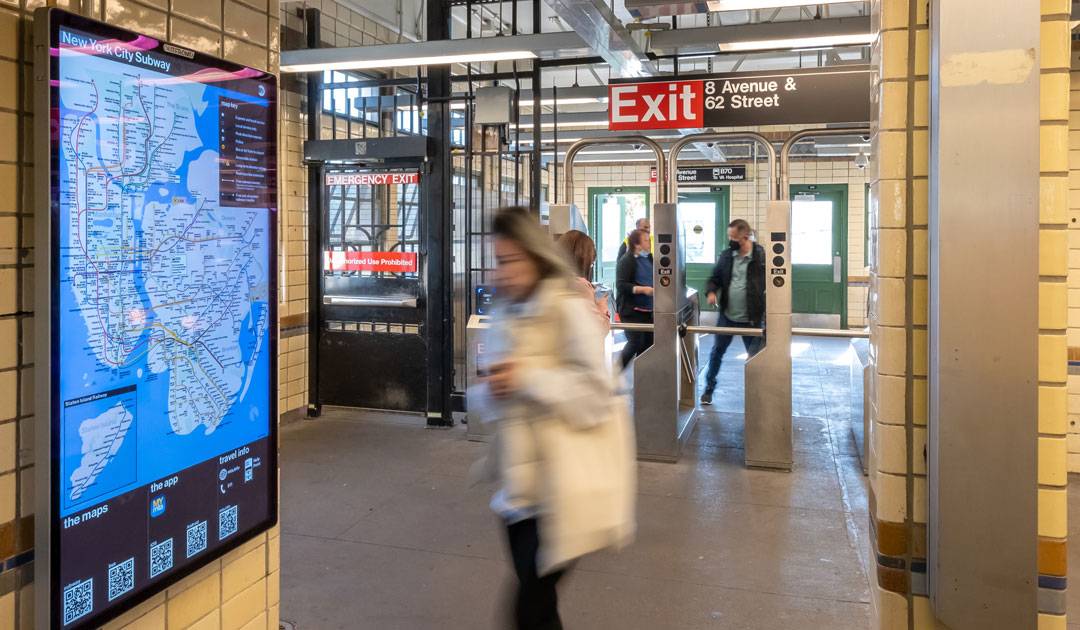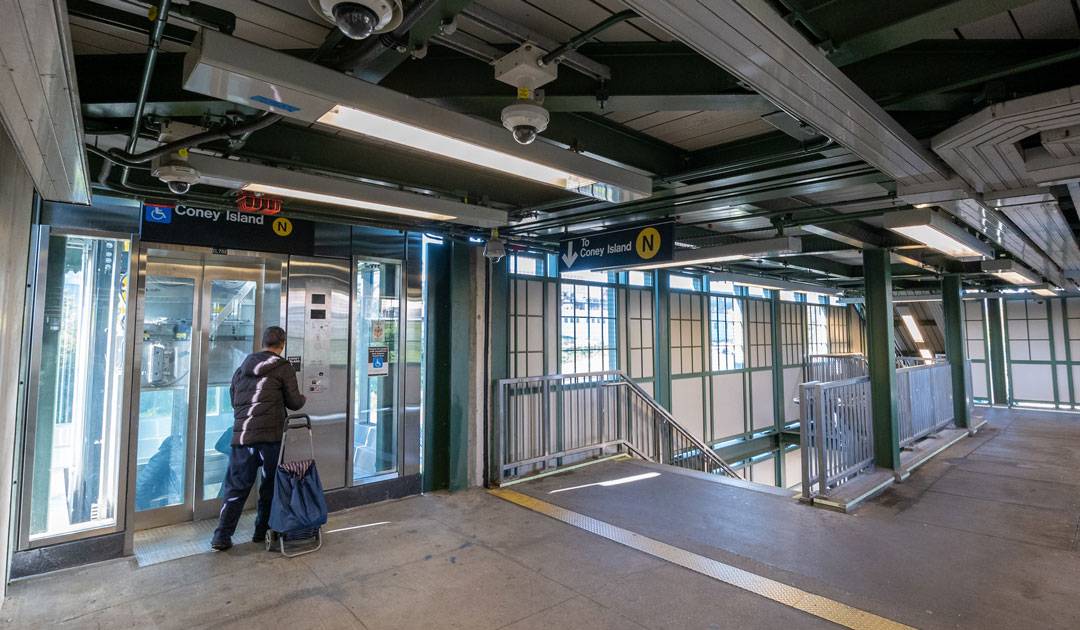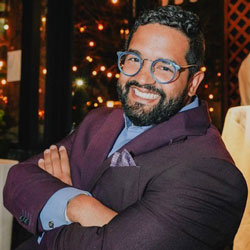
Modernizing for universal accessibility
How New York State’s MTA is updating its legacy transit system to serve all users
By Quemuel Arroyo, Chief Accessibility Officer | Metropolitan Transportation Authority
“I have never felt more excited or more like a New Yorker than during that train ride.” That was what I heard from 31-year-old Whitney, a New York resident and power wheelchair user who had just experienced a seamless, accessible subway ride. As the Metropolitan Transportation Authority’s first Chief Accessibility Officer, it’s my responsibility to ensure all transit riders have the same positive experience Whitney had.
My team and I are overseeing a historic modernization program to make our 119-year-old legacy subway system 95% accessible by 2055. When the next capital program is completed, no transit rider will be more than two stops from an accessible subway station with an elevator and or ramp.
Creating a 95% accessible system
The MTA has dedicated $5.2 billion of its $55 billion 2020-2024 capital plan to advance our program. By 2024, we will have modernized 78 subway elevators and added 67 more subway stations to our growing inventory of 142 Americans with Disabilities Act-compliant stations.
In all, MTA has committed to invest $30 billion to modernize and ensure systemwide compliance. When our program is complete, passengers will enjoy seamless, aesthetically pleasing MTA facilities packed with accessibility features:
- Signs with larger fonts and high-contrast displays
- Crisp, clear public address systems
- Decals on subway platforms that indicate accessible boarding areas
- Tactile subway line maps
- High-visibility information train screens
And, coming soon, the MTA will be the first U.S. transit system to add sign language into its digital display systems.


Finding the sweet spot for delivery
The MTA’s accessibility program is comprehensive — touching every borough and impacting many locations throughout our system. It is a balancing act to deliver the changes riders want as efficiently as possible with minimal disruptions to service. One way we do that is to complete the work at night and on weekends when ridership is lower and fewer passengers will be impacted. That is why we targeted 2055 as our completion date. It’s the sweet spot between what passengers want and what we can reasonably deliver.
Still, we are delivering the modernization rapidly, using contract bundling and design-build delivery. Aggregating the work allows us to award larger contracts for multiple stations in one borough, which enables greater efficiencies. And design-build allows for faster completion.
Redefining and broadening our target audience
Becoming universally accessible means redefining and broadening our target audience to include the 1.5 million-plus New Yorkers over 65 who may be experiencing changes in their sight, gait or hearing and could benefit from accessibility enhancements. The MTA wants senior citizens to have the option to age in the communities they helped build. That means being able to ride the mass transit system whenever and wherever they want.
We also have expanded our target audience to include New York City’s 60 million annual tourists who may or may not know how to navigate a bus or subway system. Our message is, “Come to New York City. We give you the access to move around 24/7, so you can enjoy all the city offers.”
Our accessibility program also considers the needs of passengers with bicycles, musical instruments and shopping carts. And, for parents, we have allocated stroller space on 1,000 MTA buses, so when they board, they don’t have the Herculean task of holding a child with one hand and folding up a stroller with the other.
Ultimately, our goal is not to limit the definition of accessibility to specific populations. Accessibility is universal and everyone who comes to a bus stop or train station needs assistance in one form or another. We intend to make their experiences easier.
Giving passengers the right tools
The MTA provides tools our customers need to navigate our system independently and successfully. For example, mobile apps, such as NaviLens and MagusCards, allow people with visual and hearing disabilities to become familiar with our system from their homes. They learn where bus stops, train stations and elevators are located, how to purchase a Metro card, navigate a turnstile and get to the platform.
Forming broad partnerships
One of the more innovative steps we’ve taken to make our system 95% accessible has been working with the New York City Council, the Mayor’s Office for People with Disabilities and the New York City Department of Buildings to ratify a new Zoning for Accessibility building code. The 2021 legislation incentivizes private developers to install an elevator or additional access points to an MTA train station when that station is within the envelope of their developments. In exchange, participants are allowed to build denser, higher structures.
Macy’s recently paid for and opened a new ADA-compliant entrance at our Hoyt Station in Brooklyn. The new entrance provides direct access to the retailer’s Fulton Street location and is expected to increase store traffic.
Private-sector partners, such as Macy’s, which also has agreed to maintain the elevator to MTA standards, bring accessibility to fast-growing areas of our system more quickly than we could alone. This year, the MTA has received four ZFA applications with more to be expected.
Visioning with passengers
The MTA strongly believes if we provide our customers with what they need, they will ride more and even pay for it. And the only way to find out what they need is to engage with them and learn how the system is or isn’t serving them. For example, we are testing a best-in-class electric turnstile that opens and closes like saloon doors, and New Yorkers have shared what they think about them, which is precisely what we want to happen.
The pilot program reveals how the top-of-the-line gate needs to be improved to fit the New York environment. These learnings will become our requirements for a fare array designed specifically to meet the demands of our ridership.
In addition to pilot programs, we engage with our customers in person and online. We visit their communities to learn about their needs and educate them about MTA’s goals and initiatives, such as our state-of-good-repair program. Instead of viewing state-of-good-repair projects as a direct competitor of their agendas, we want our riders to understand that service availability is synonymous with service accessibility.
Becoming the industry model
In fulfilling our commitment to providing a system where all can move with dignity, safety and independence, we intend to make New York City’s mass transit system the premier model of universal accessibility. And we are making significant strides toward that goal.
ABOUT THE AUTHOR
 Quemuel Arroyo
Quemuel Arroyo
Chief Accessibility Officer
Metropolitan Transportation Authority
As the first agency wide chief accessibility officer for the Metropolitan Transportation Authority, Arroyo leads the implementation of policies, initiatives and programs that advance accessibility throughout the organization. Before joining MTA, he served as interim president and global head of Community at Charge, an e-scooter charging and docking company. Before Charge, Arroyo served as the first chief accessibility specialist at the New York City Department of Transportation, where he helped settle the largest accessibility claim in the United States.
